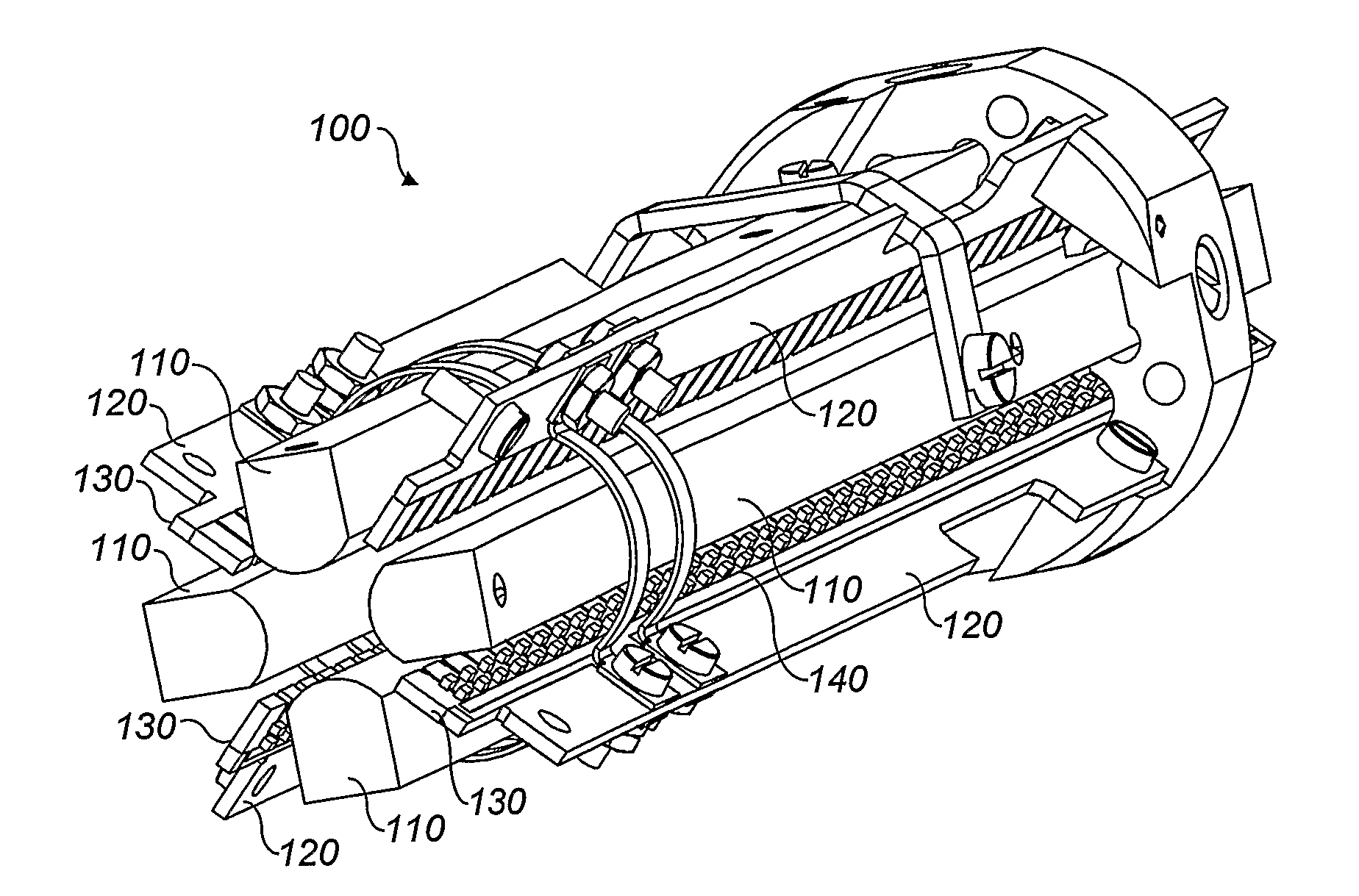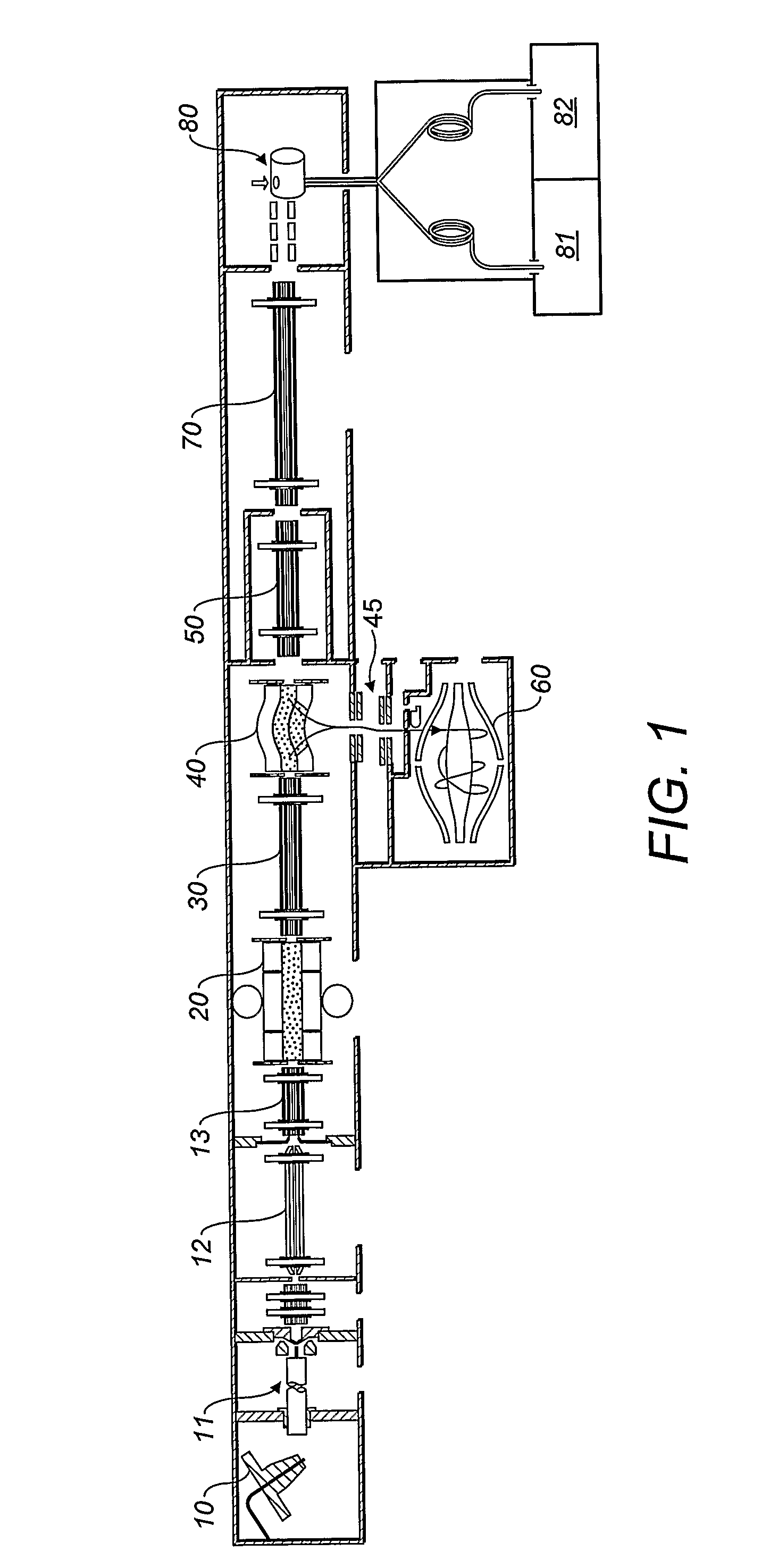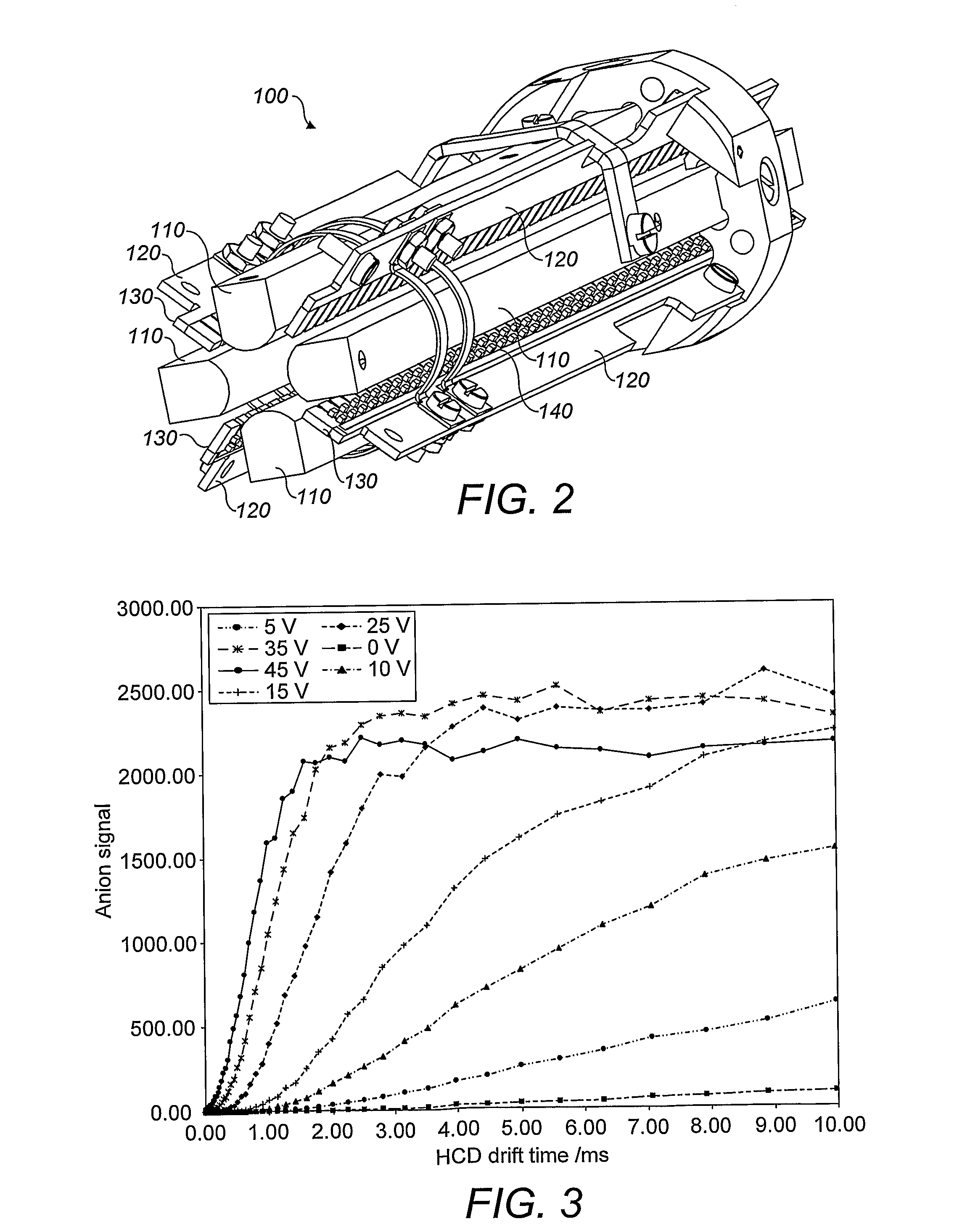Collision Cell
a collision cell and cell technology, applied in the field of collision cells, can solve the problems of high rate at which ions are ejected from the collision cell once trapped, in the reverse direction, and in the backward direction, and achieve the effects of increasing the injection energy, easy electron giving, and reliable ra
- Summary
- Abstract
- Description
- Claims
- Application Information
AI Technical Summary
Benefits of technology
Problems solved by technology
Method used
Image
Examples
Embodiment Construction
[0062]Referring first to FIG. 1, there is shown an overview of a known mass spectrometer, comprising: an ion source 10; a linear ion trap 20; a transfer multipole ion guide 30; a curved ion trap 40; a High-energy Collision Dissociation (HCD) collision cell 50; a mass analyser 60; a transfer multipole ion guide 70; and a reagent ion source 80.
[0063]Ions are generated in the ion source 10, and ejected towards ion introduction hardware 11, comprising heated capillary, skimmer and lenses. The ions are then guided through multipole ion guide 12 and multipole ion guide 13 to a Linear Ion Trap mass spectrometer 20, which can act as both a mass analyzer and an ion trap. Ions are ejected from the linear ion trap 20 to a transfer multipole ion guide 30, which acts as a quadrupole mass filter and which transfers the ions to a curved trap 40. Vertically below the curved trap 40 is a z-lens 45 and a mass analyser 60, which is this embodiment is an Orbitrap™ mass analyser.
[0064]To the right of th...
PUM
 Login to View More
Login to View More Abstract
Description
Claims
Application Information
 Login to View More
Login to View More - R&D
- Intellectual Property
- Life Sciences
- Materials
- Tech Scout
- Unparalleled Data Quality
- Higher Quality Content
- 60% Fewer Hallucinations
Browse by: Latest US Patents, China's latest patents, Technical Efficacy Thesaurus, Application Domain, Technology Topic, Popular Technical Reports.
© 2025 PatSnap. All rights reserved.Legal|Privacy policy|Modern Slavery Act Transparency Statement|Sitemap|About US| Contact US: help@patsnap.com



